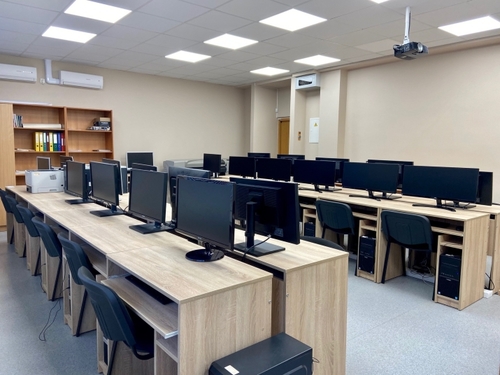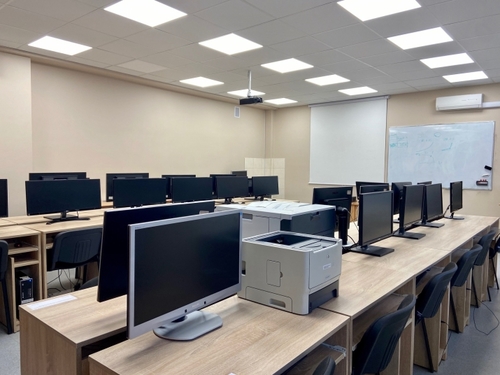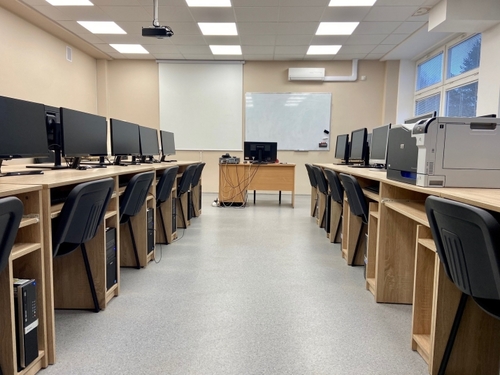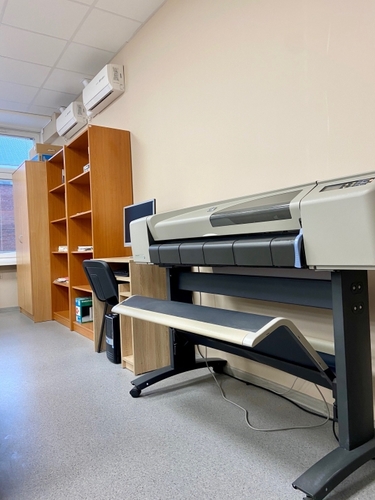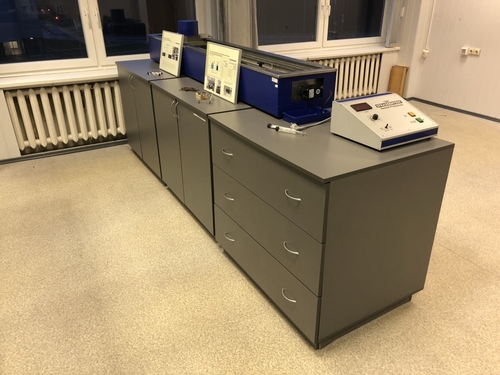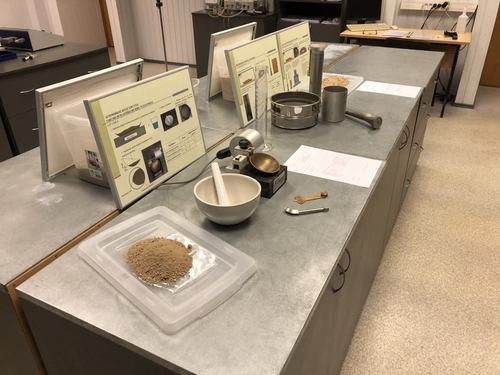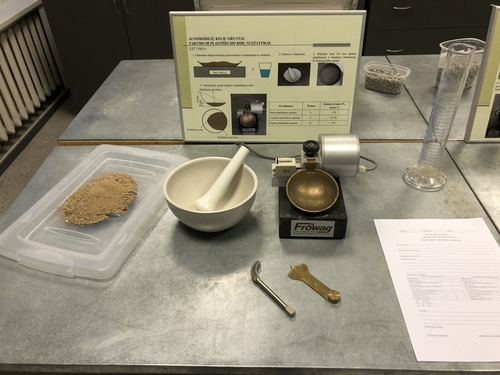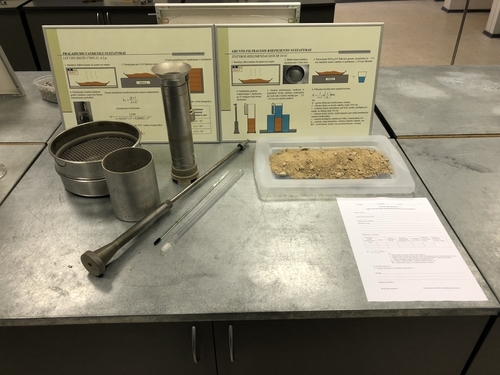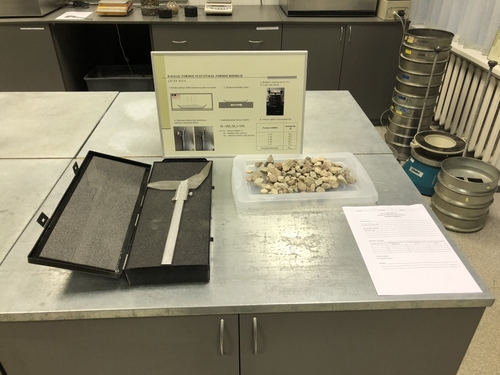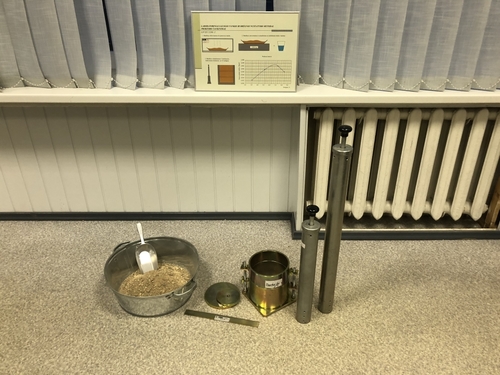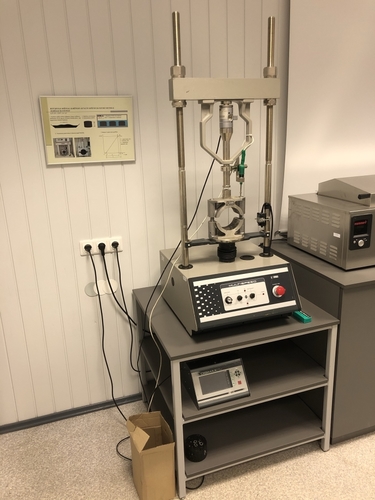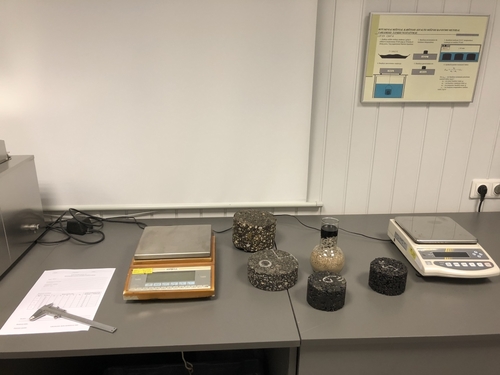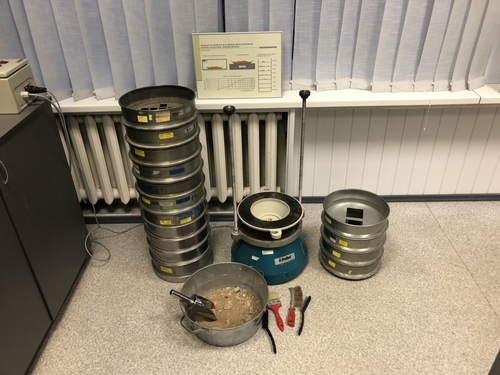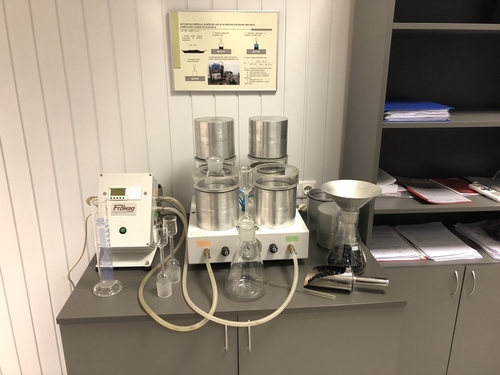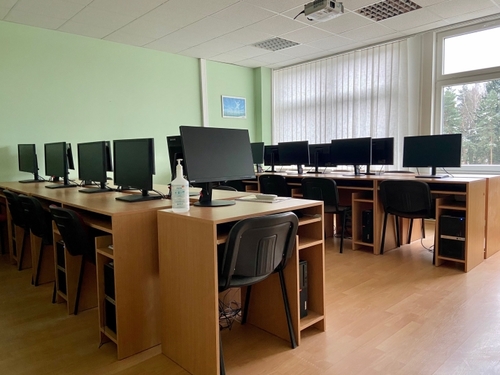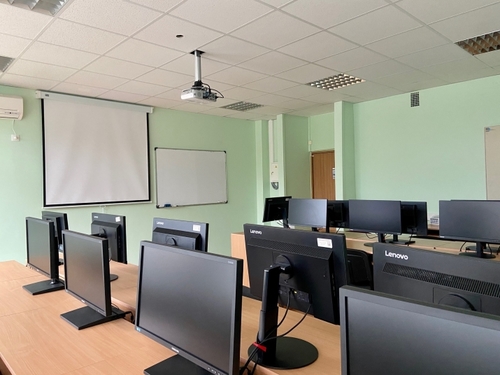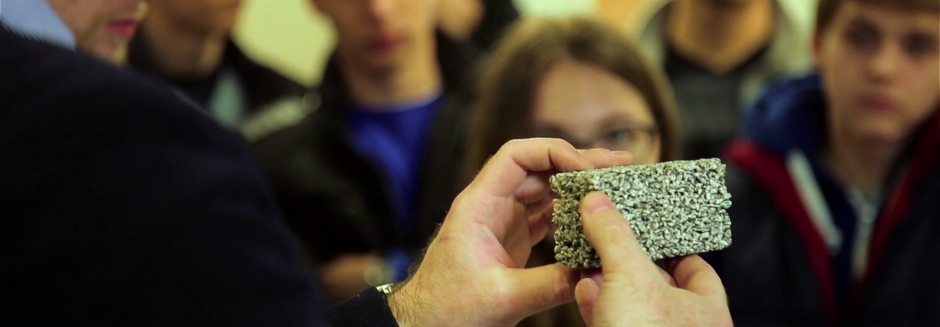
Laboratories of Department of Roads
The department has three teaching laboratories, where students develop the following skills:
- To plan and design modern roads, streets, bridges and other transport structures, railways, airports and urban infrastructure.
- To visualize urban engineering systems, model them, and create thematic digital maps using GIS tools.
- Using computer technologies to collect, process and interpret the data necessary for engineering, sustainable road and living environment and urban planning tasks.
Students are trained and perform practical tasks in the design of roads, city streets, railways and other trafficked areas.
Equipment
The laboratory infrastructure consists of:
- stationary computers (22 units);
- wide-format printer HP DesignJet 500;
- laser printers (2 units);
- video projector (1 unit);
- specialized software:
- Windows 10 operating system;
- MS Office package;
- Autodesk 2021 software package (AudoCAD, AutoCAD Civil3D, Navisworks Manage 360, ReCap360 etc.);
- Bentley software package (Microstations, OpenRoads).
Ongoing activities
- Computer-aided design of roads (J. Ryliske)
- Computer-aided design and BIM (J. Ryliske)
- Multiple-purpose project (road and railway with crossing and level-crossing)
- Scientific research in road engineering (D. Zilionienė, V. Jasiuniene, D. Cygas)
Description of ongoing activities
Students are trained and perform practical tasks in the design of roads, city streets, railways and other trafficked areas. During laboratory work with the appropriate computer-aided design systems, the following tasks are performed:
- computer-aided processing of initial data
- selection of road, railway and street route variant and computer-aided design of route turning elements (horizontal curves)
- computer-aided creation of timesheets of straight and curved elements
- computer-aided application of road (street) vertical curves designing a longitudinal road profile
- computer-aided design of turn;
- visibility testing with the help of computer-aided road design system
- computer-aided design of road (street) pavement structure
- computer-aided design of 3D model
- formation of reports on the volume of earthworks and quantities of materials
- preparation and presentation of drawings
- functional possibilities and application of AutoCAD Civil 3D system in BIM projects
- functionality and application of Autodesk ReCap 360 system in BIM projects
- functionality and application of Autodesk InfraWorks 360 system in BIM projects
Students perform experimental research of road and railway construction materials and analyse the obtained results in the laboratory.
Equipment
The laboratory infrastructure consists of:
- a set of sieves for determining the particle size distribution of primers and unbound mixtures;
- scales;
- sieving device;
- thermostatically controlled oven;
- Casagrande device for determining the plastic properties of soil;
- soil filtration detection equipment;
- thermometer;
- equipment for determining the dry density and optimum moisture of primers and unbound mixtures;
- a calliper to determine the particle shape index;
- a set of sieves for determining the particle plane index of the aggregates or aggregate mixture;
- vacuum device;
- a press to determine the stability and flow-ability of asphalt specimens;
- thermostatically controlled water bath;
- pycnometers.
Ongoing activities
- Road and railway construction materials (V. Vorobjovas)
Description of ongoing activities
Students are provided with conditions to carry out experimental research of road and railway construction materials in the training laboratory of road and railway construction materials. Here, students combine theoretical knowledge and knowledge gained from laboratory research. In this way, a practical understanding of both the properties of the materials and the values of the properties obtained by research is gained. The laboratory is equipped with equipment and tools that allow students to determine the main properties of materials and learn to recognize the type of material and select appropriate methods to assess the properties. Students learn to recognize the type of soil according to physical and mechanical properties and to evaluate the suitability of the soil for the installation of the bedrock and the peculiarities of cold sensitivity. They determine the water permeability of soils and its dependence on the particle size distribution. Also, determine the dependence of soil density on its moisture. In addition, they are acquainted with the physical properties of aggregates and their classification. Students determine the basic physical and mechanical properties of asphalt mix, asphalt cores, such as apparent, and mix densities, voids content, stability and flow-ability. The equipment available in the laboratory provides a significant experience and stimulates students’ interest in science.
Students learn and solve practical tasks in the fields of planning, design and modelling of cities, its transport and engineering infrastructure in the laboratory.
Equipment
Equipment:
- stationary computers (19 units);
- video projector (1 units);
- gas analyzer VRAE (1 unit);
- street distance meter - M 10 (1 unit);
- laser distance meter - Leica Disto A6 (1 unit);
- laser distance meter - Leica Disto D2 (1 unit);
- laser speedometer - Traffi Patrol (1 unit);
- noise meters - TES-1353 (2 units);
- GPS Leica Zeno 10 (1 unit);
- digital cameras (3 units);
- video cameras (2 units).
- Windows 10 operating system;
- MS Office package;
- PTV Vissim 10.00-16-64 bit, PTV Vistro 6-64 bit, PTV Visum 17-64 bit software for traffic flow modelling;
- ArcGIS 10.8 - Geographic Information Systems Software (academic versions);
- QGIS;
- M 1:10 000 georeferenced spatial data set of the territory of the Republic of Lithuania (GDR10LT);
- M 1: 5000 georeferenced spatial data set for residential areas (GDR5LT);
- Lithuanian digital Orto-photographic map M 1: 10000 ORT10LT;
- Lithuanian Geo-information Database GDB200 (M1: 200000).
Ongoing activities
- Basics of geographic information systems (R. Uspalyte-Vitkuniene)
- Transport flow modelling (V. Grigonis)
- Traffic safety information systems (R. Uspalyte-Vitkuniene)
- Scientific research in road engineering (D. Zilioniene, V. Jasiuniene, D. Cygas)
- Traffic organization on roads and streets (V. Grigonis)
- Geographic information systems (V. Palevicius, R. Uspalyte-Vitkuniene)
- Urban infrastructure (V. Palevicius)
- Urban information systems (R. Uspalytė-Vitkuniene
Description of ongoing activities
Students are provided with opportunities to study and solve practical tasks in the fields of planning, design and modelling of cities, its communication and engineering infrastructure in the laboratory of urban transport traffic. Geographic information systems (GIS), traffic flow modelling and other practical tasks are used to develop skills. Students prepare laboratory work on computers using specialized software - ArcGIS and PTV software package.
During exercises and laboratory work, students are introduced to the principles of traffic flow modelling. Typical elements of the communication system are modelled, experiments related to hypotheses on the improvement of communication systems and comparison of practical solutions are performed.
Regarding the relevant study modules, students are also introduced to geographic information systems (GIS), the different features of ArcGIS software and its capabilities. For the implementation of laboratory works, students use data from geo-information databases (GDRLT) and digital raster orto-photographic maps (ORTLT) of the territory of the Republic of Lithuania.
They are also introduced to the presentation of maps, the creation of databases and the different tools used for spatial analysis. Based on the collected attributes, the analysis of the selected area is performed and 3D models of the areas are created in the ArcScene environment
During exercises and laboratory work, students are introduced to the principles of traffic flow modelling. Typical elements of the communication system are modelled, experiments related to hypotheses on the improvement of communication systems and comparison of practical solutions are performed.
Regarding the relevant study modules, students are also introduced to geographic information systems (GIS), the different features of ArcGIS software and its capabilities. For the implementation of laboratory works, students use data from geo-information databases (GDRLT) and digital raster orto-photographic maps (ORTLT) of the territory of the Republic of Lithuania.
They are also introduced to the presentation of maps, the creation of databases and the different tools used for spatial analysis. Based on the collected attributes, the analysis of the selected area is performed and 3D models of the areas are created in the ArcScene environment
-
- Page administrators:
- Guoda Varžgalytė
- Viktoras Vorobjovas
- Laura Ladietaitė
- Karolina Kardokaitė
- Ugnė Daraškevičiūtė


